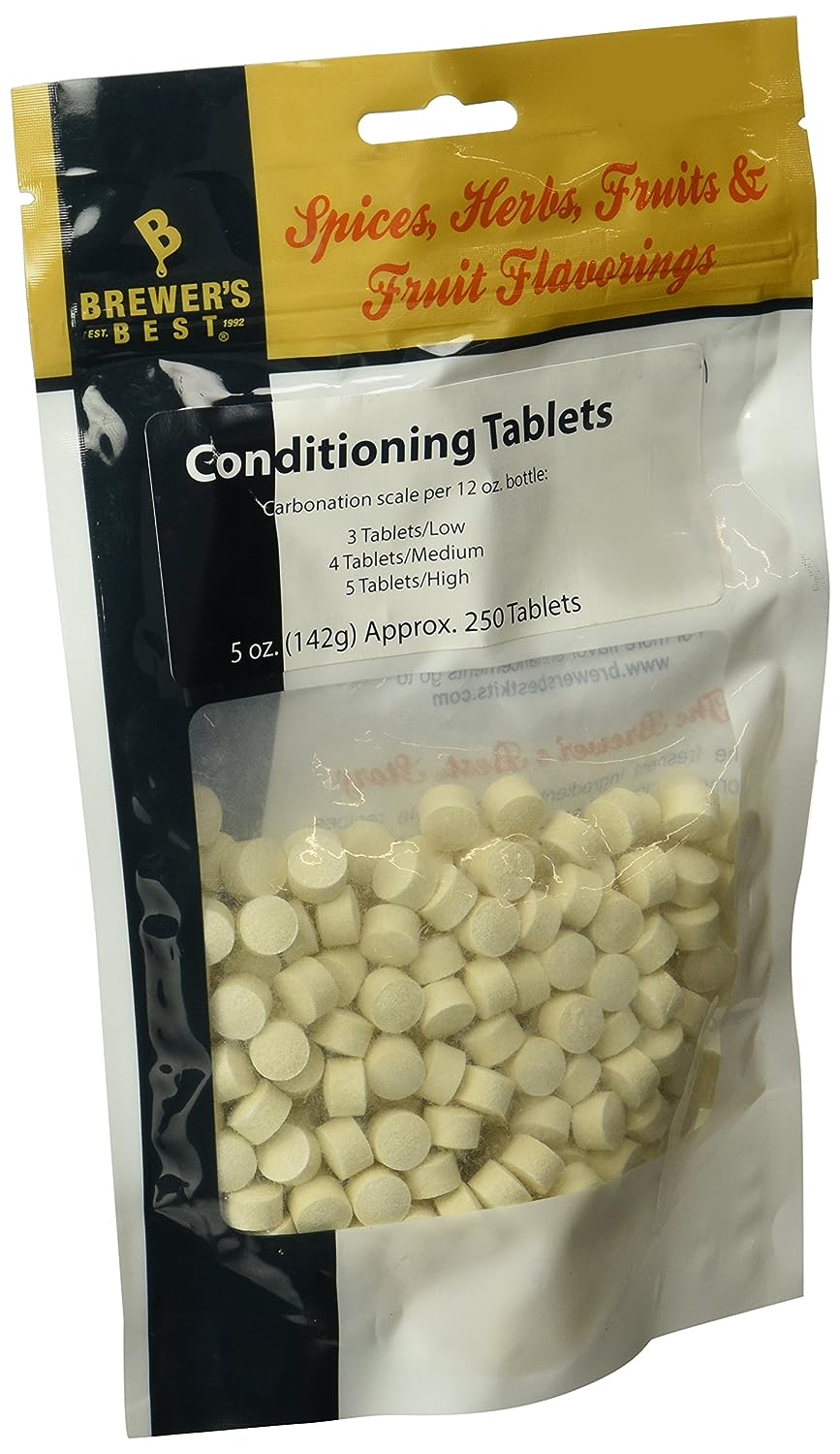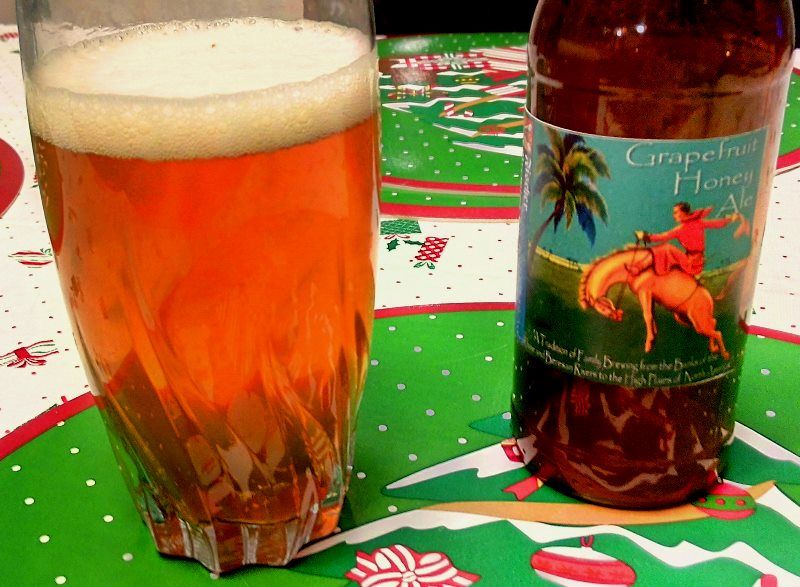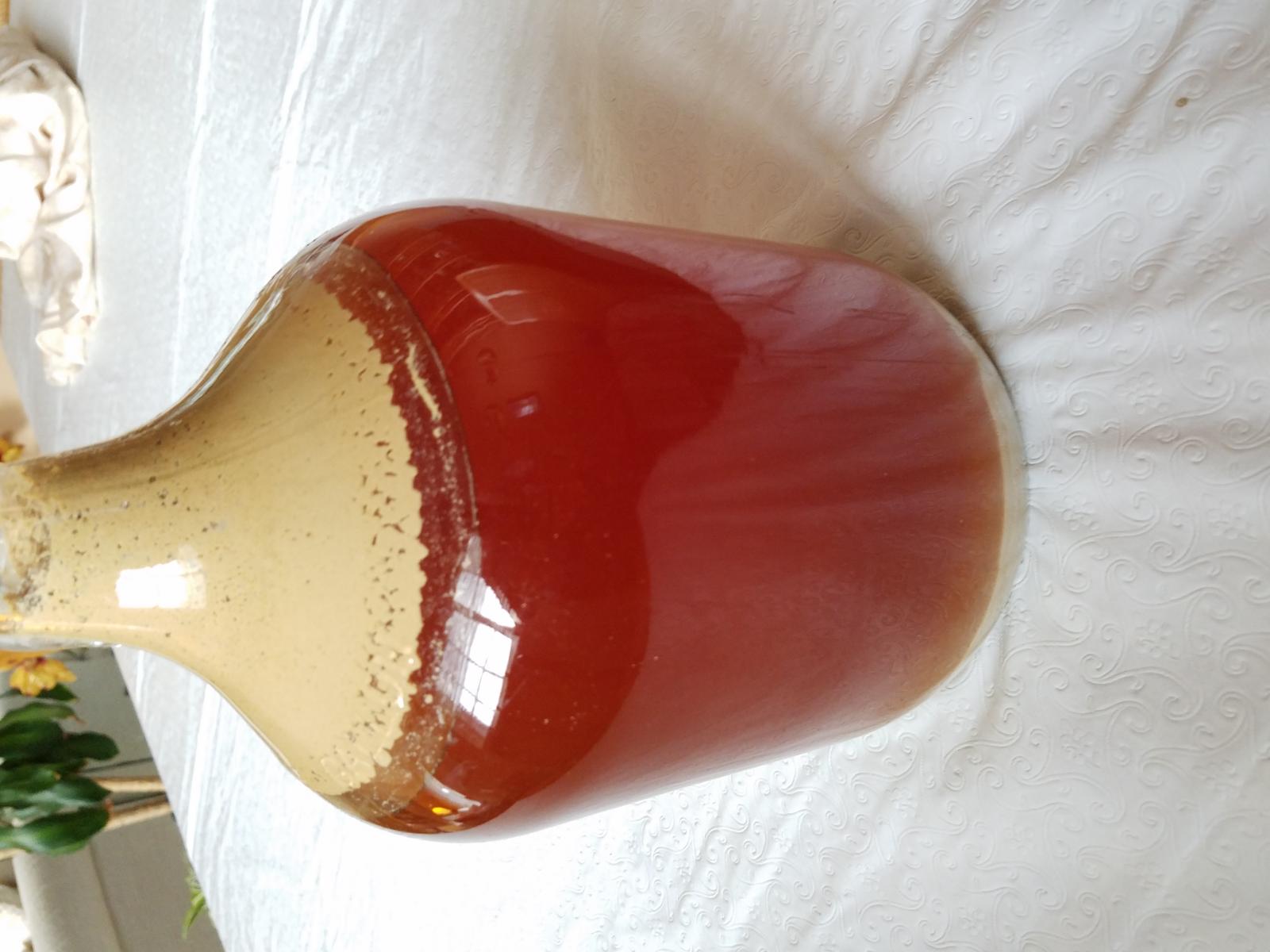I bottled this beer last night, after cold-crashing in the refrigerator for a couple of days in order to clear it and pack the sediment down as tightly as possible. As expected, I only had enough for 6 bottles, rather than the usual 9 or sometimes even 10. Considering the fact that it got dumped, I'll take what I get and not complain.
Thanks to the cold-crashing, the beer was very nice and clear. As I siphoned down to the bottom, I picked up a very small amount of sediment, but much less than usual, and I am pretty sure that after carbonation and conditioning, this beer will be a joy to look at. I had enough left over for a small sample and was quite impressed with what I had wrought; the aroma and flavour were both grapefruity without being cloying and there was a well-balanced bitterness - from the Amarillo hops and grapefruit zest - that complimented the beer really nicely. With this variety of beer, the aroma is what I really enjoy; the grapefruit, malts, hops and honey all seem to contribute to something really special. I am expecting this to be a really good beer after it has some conditioning time in the bottle.
Since I didn't know exactly - or even really approximately - how much beer I had to bottle, there wasn't really any way to know exactly how much priming sugar to add for carbonation. Because of this, I used the carbonation tablets that my son had bought for me, which work on a "per bottle" rather than "batch" basis:
I've never used these before, but they are pure dextrose, which is commonly used by homebrewers (and the brewing industry) for carbonating beer. I normally use honey, maple syrup or sometimes agave nectar, depending on what I am brewing, but the truth is that when it comes to carbonation, the sugar that is used matters very little, as long as there is a proper amount of it. Each type of sugar requires its own amount, but luckily for me, these tablets have a handy reference, right on the front.
After over 3 weeks, fermentation should have been finished, but I've had slow fermentations before. Normally, I'd go for a medium carbonation for this type of beer; however, considering the fact that I wasn't absolutely, 100% sure that fermentation had completed, I chose to use 3 tablets per bottle, for a "low" carbonation. This way, If for some reason the beer wasn't completely finished fermenting, I've got some wiggle room before bottles start exploding - which they probably won't anyway, but it never hurts to err on the side of caution.
Now, my 6-pack of Grapefruit Honey Ale is sitting in our closet at 70 degrees, which is a great temperature for allowing carbonation to take place. After 2 weeks, possibly 3, I'll put the beer in the refrigerator for a week before sampling. I really think it's going to be good, in spite of the problems that I've had with it.
More as it happens, etc. & c....
Ron





























































